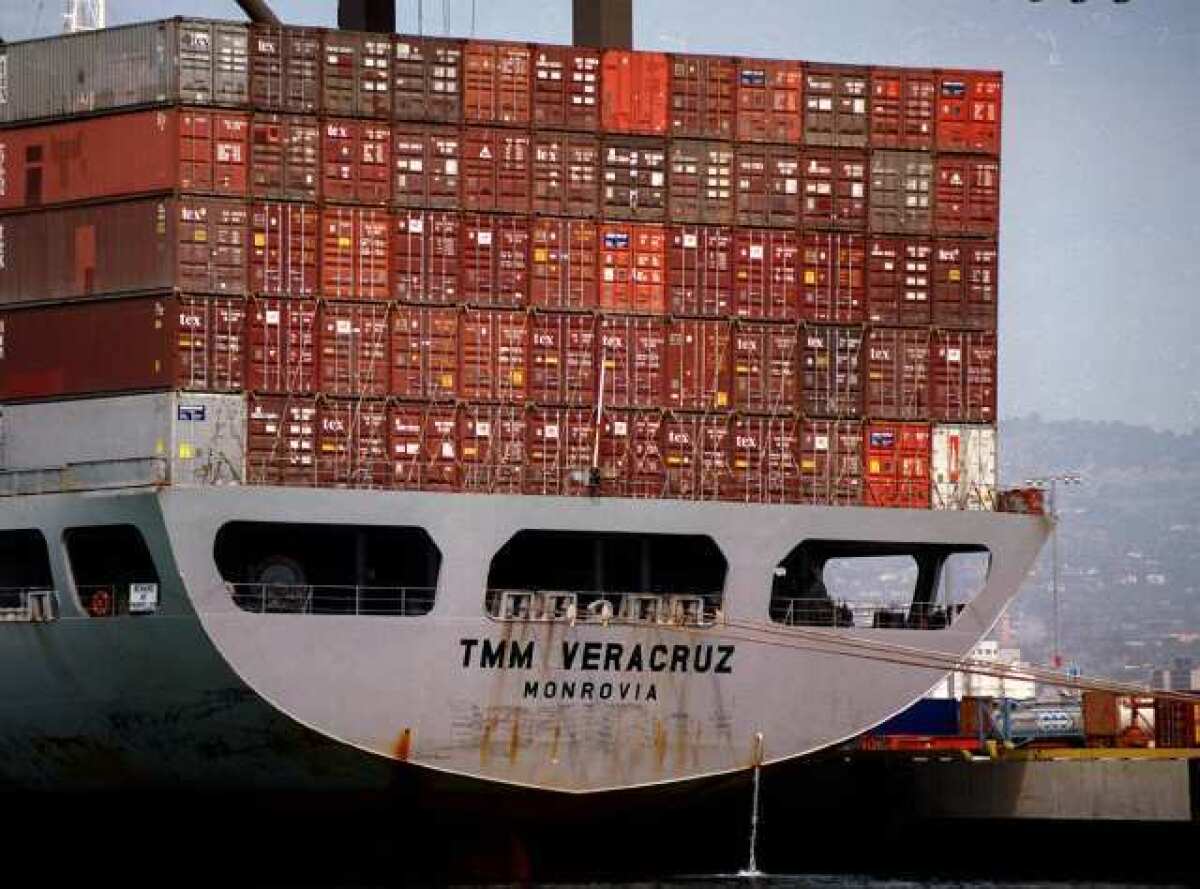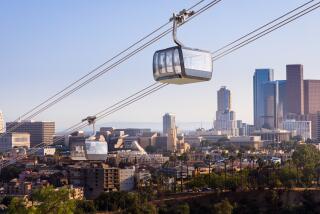Newton: L.A.’s political football

Consider two projects that could have profound impacts on Los Angeles: Both would create thousands of jobs. One would increase traffic a bit; the other would significantly decrease it. One would be “carbon neutral,” meaning it would not help the global environment but wouldn’t hurt it either; the other would powerfully reduce emissions. Both could create some inconveniences to their immediate neighbors while delivering tax revenue, jobs and services to the city at large.
One is the proposed downtown football stadium, and it has sailed through government approvals despite its potential for increasing traffic and inconveniencing people who live or work downtown. The other is a rail connector for the Port of Los Angeles, and it has dragged along for seven years despite its clear benefits for the economy and the environment.
Los Angeles officials fell all over themselves to push the stadium through. Mayor Antonio Villaraigosa was photographed tossing a football with AEG Chief Executive Tim Leiweke even before the deal was negotiated. The Legislature enacted a special bill to speed up any legal challenges. By contrast, the mayor and the Legislature have been quiet on the rail project.
Some of this is just the nature of the projects. A football stadium conjures up tailgating parties, cheerleaders and frivolity. It’s easy to get the glamour — and, by the way, it’s a sound and important project, worthy of the enthusiasm.
By contrast, however, the rail project is about hard infrastructure. It would build a facility for trucks in the port to unload cargo from ships and load it onto the rail network just a few miles away, rather than hauling it up the 710 Freeway. That would make the port more efficient and eliminate 1.5 million to 2 million annual truck trips on that freeway — and, with it, the emissions of those trucks. It would speed commerce and employ workers. But there aren’t any cheerleaders.
Stadiums will always have appeal, but the fast-tracking of one project and the delays of the other point to real defects in the political culture of this city and county. Too often, local politicians grasp for glamour and shrink from hard work. They flinch at any hint of neighborhood opposition. And for all their mewling about the priority they place on jobs — is there a single elected official who doesn’t say that jobs are his top priority? — they don’t really know much about how to create them, or even how to get out of the way of those prepared to create them.
Matt Rose is the chief executive officer of BNSF, the railroad company that wants to build the facility at the port. He’s prepared to invest $500 million in this station, known as an “intermodal” transfer facility. His railroad has spent more than $40 million and more than seven years working to make it happen. He’s not looking for public subsidy, just permission to invest. “We think it’s a very compelling project,” he told me last week.
In fact, he told me much the same thing when we first discussed the project. That was in August 2011. Ten months later, the port has completed a draft environmental impact report that highlighted the benefits of the project, including 1,500 construction jobs for three years and tens of thousands more direct and indirect jobs once the building was operating and speeding commerce. The facility itself would employ about 450 workers. There were a bunch of comments on the report, and the port is replying to them. But still, no action.
If the city’s Harbor Commission would approve the project tomorrow, Rose says, BNSF would be prepared to start construction by the end of the year. But that won’t happen. The port wants to get along with its neighbors, and they’re objecting to the prospect of a major construction project for a facility they fear would bring noise and traffic 24 hours a day. So the port staff is moving cautiously.
As for the mayor? “When he’s with me, he’s been very, very supportive,” Rose said. “When he’s with neighbors, I can’t say.”
I pressed, sensing Rose’s frustration, but he knows better than to pick a fight with the guy whose support or opposition could make or break the project. What if the mayor trumpeted this project the way he did the stadium, I asked? Rose paused. “He’s been supportive,” the CEO offered, “but I don’t have a permit yet.”
It doesn’t have to be this way. When BNSF proposed a similar project outside of Kansas City, the state of Kansas saw the potential for jobs and chipped in $30 million to move the idea along faster. In Los Angeles, meanwhile, the mayor has spent his entire seven years in office with this proposal before him. As of last week, he still declined to commit to a position, saying only that the port should continue to grow “in an environmentally responsible manner.” And people wonder why it’s hard to do business in Los Angeles.
Jim Newton’s column appears Mondays. His latest book is “Eisenhower: The White House Years.” Reach him at jim.newton@latimes.com or follow him on Twitter: @newton_jim.
More to Read
A cure for the common opinion
Get thought-provoking perspectives with our weekly newsletter.
You may occasionally receive promotional content from the Los Angeles Times.







